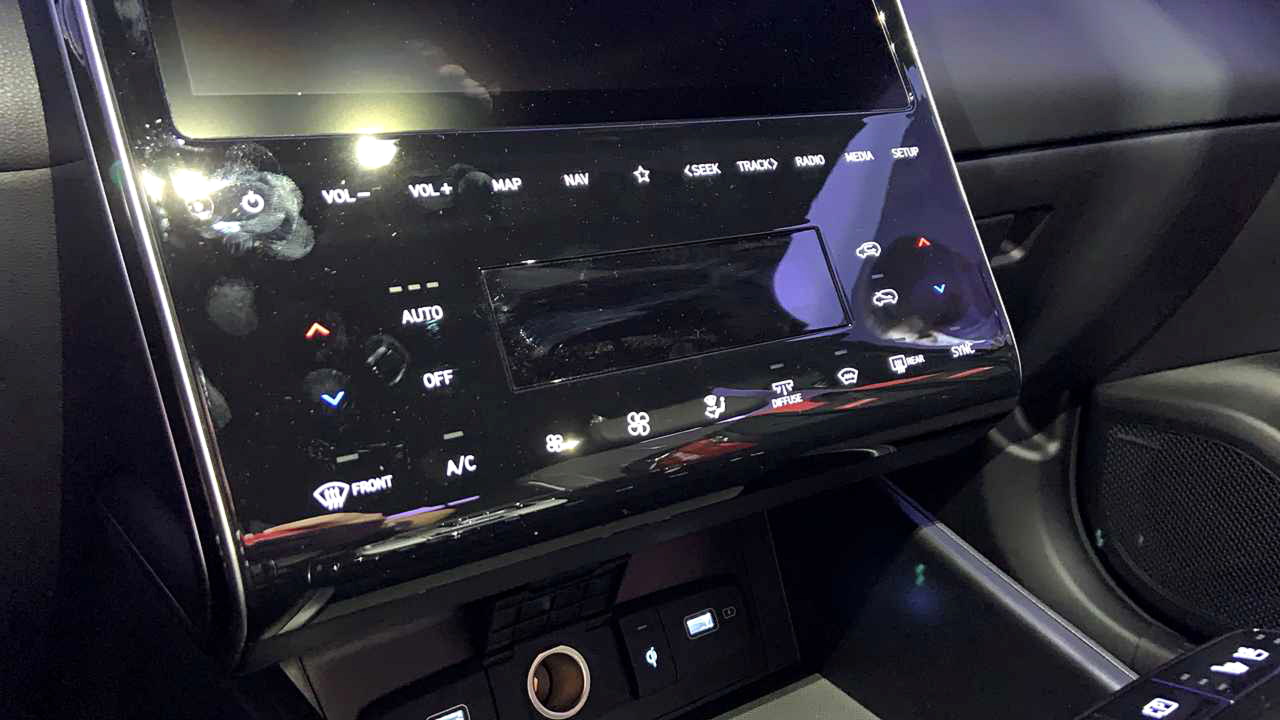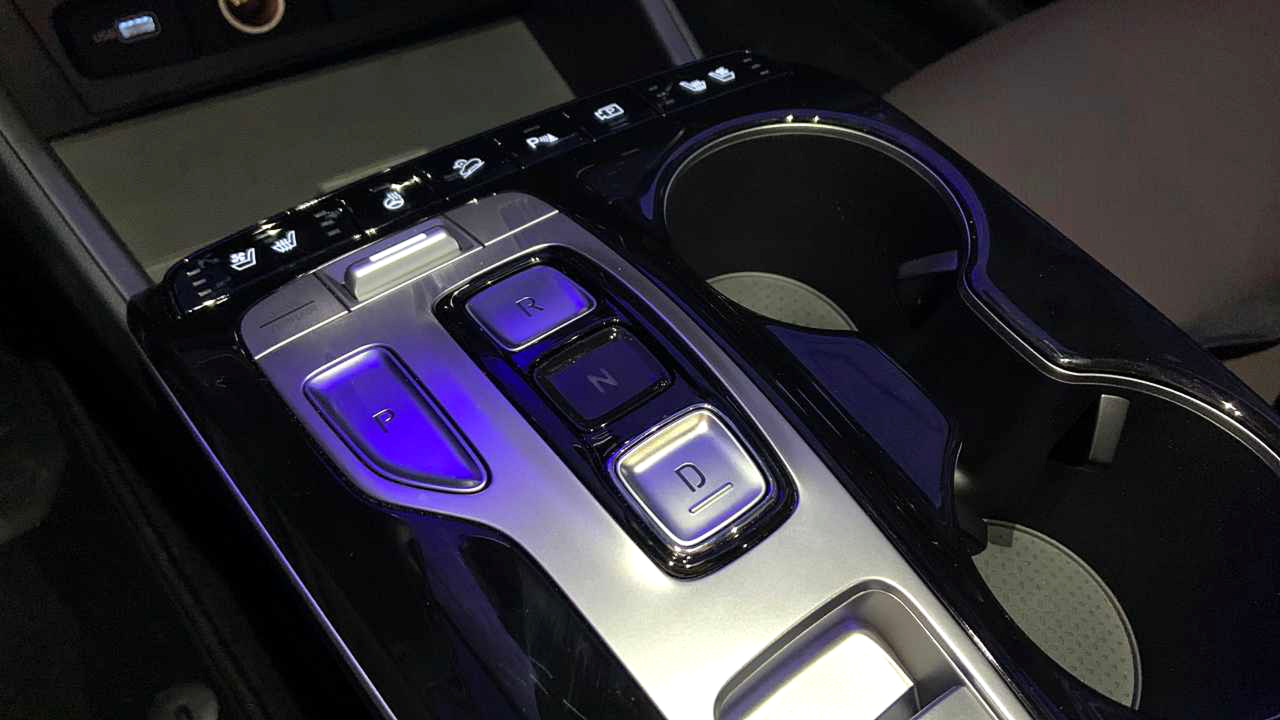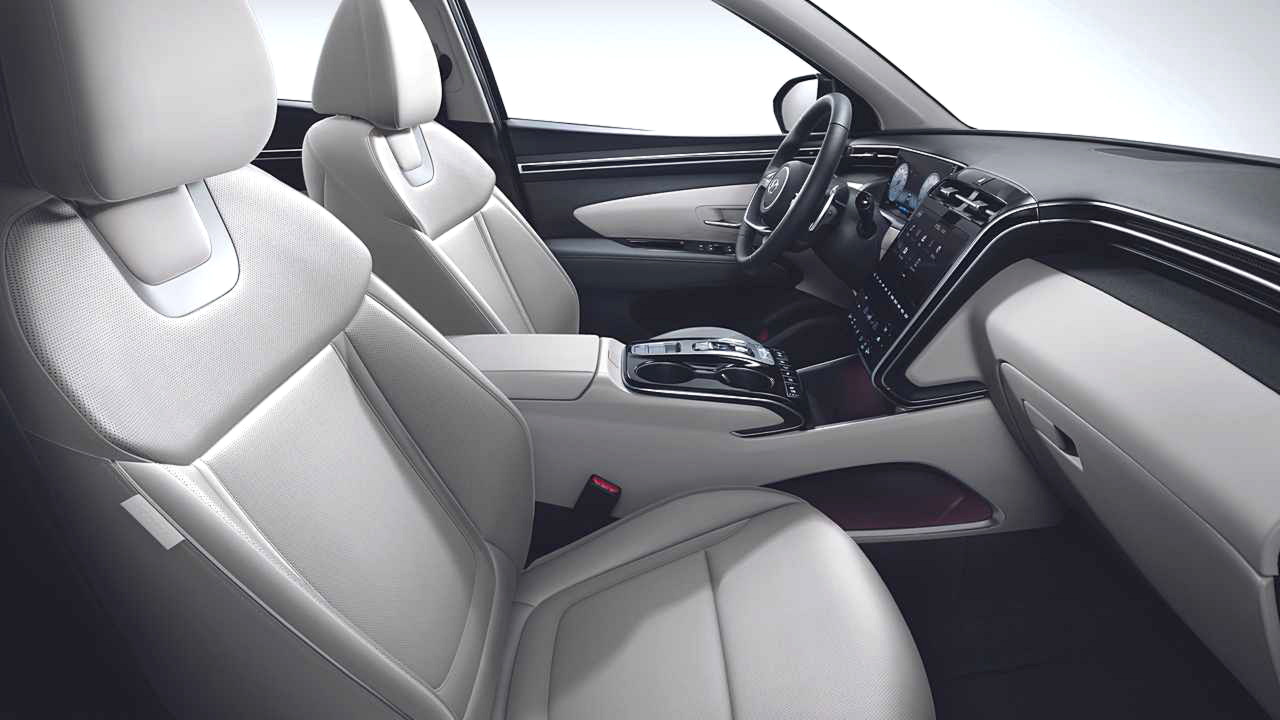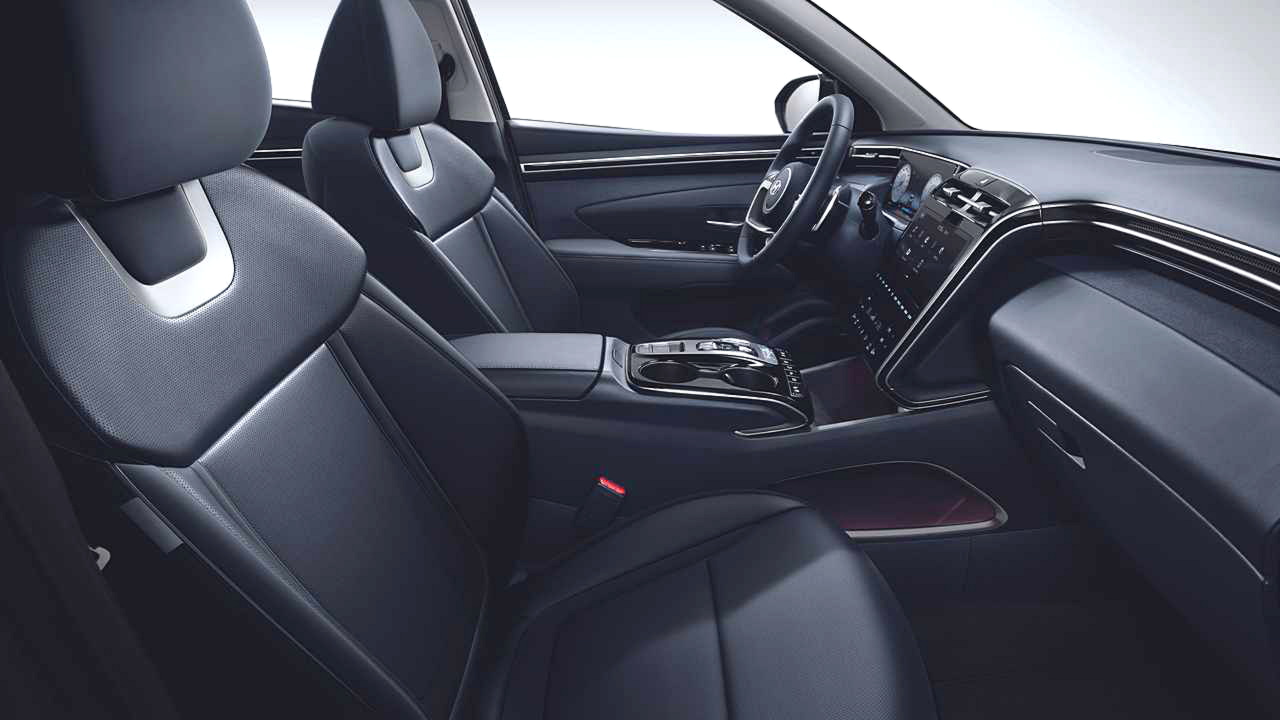Description of the features of the Hyundai Tucson IV generation
Material content
Textile and gloss
Inside, there is a similar “space” environment: virtual instruments without a visor, a large touchscreen of a media system, a complex combination of surfaces and materials (how do you like textile inserts on the front panel instead of ordinary wood and metal?). However, if the masters of body repair have to deal with the nuances of the intricate forms of external parts, then the driver will have to communicate with the fully sensory monolith of the massive center console.

And this is not good news. I’ll postpone the final verdict until the test drive, but the first impression is that, given the completely flat glossy surface, only a clever person can touch the virtual buttons on the go.


Although in general the ergonomics are adequate. High landing will appeal to the target audience – fashionable citizens and ladies. Equipped with electric drives and ventilation, the chair is dense, with a well-adjusted profile. The steering wheel is grippy, sportily modest in diameter. Under the right hand is a voluminous box-armrest with an outgrowth of the push-button remote control of the automatic transmission a la flagship crossover Palisade. At the same time, in the initial versions, Tucson will receive a manual gearbox – and on such machines the central tunnel will be arranged differently.


Video
luggage compartment
The capacity of the cargo compartment on the Hyundai is 539 liters, with the rear sofa folded, the volume reaches 1903 liters. The door is equipped with standard stops, the Prestige models are equipped with electric drives for unlocking and locking. The back of the rear sofa is folded in a ratio of 40:60, a flat floor allows you to carry bulky cargo in the trunk. Crossover Tucson IV generation is designed to move with a trailer weighing 750 kg (without brakes). If the trailer is equipped with an inertia braking system, then the permissible weight is from 1500 to 1900 kg (depending on the power unit).
How does he ride
 The classic 8-speed automatic selector gives way to the keys on the machines in the maximum configuration, but not in the case of the 2.0 engine, which has a 6-speed gearbox. All Tussans have a choice between economical, normal, sporty and adaptive asphalt driving modes. Adaptation to the road surface – only for all-wheel drive with a gun.
The classic 8-speed automatic selector gives way to the keys on the machines in the maximum configuration, but not in the case of the 2.0 engine, which has a 6-speed gearbox. All Tussans have a choice between economical, normal, sporty and adaptive asphalt driving modes. Adaptation to the road surface – only for all-wheel drive with a gun.
The classic 8-speed automatic selector gives way to the keys on the machines in the maximum configuration, but not in the case of the 2.0 engine, which has a 6-speed gearbox. All Tussans have a choice between economical, normal, sporty and adaptive asphalt driving modes. Adaptation to the road surface – only for all-wheel drive with a gun.
It is clear that I wanted to ride on the basic version, but from the first cars I was given not the cheapest ones – petrol 2.5 GDI (190 hp) and diesel 2.0 (186 hp). Both have an 8-speed automatic and all-wheel drive.
Either I was expecting too much from Tussan 2.5, or they messed up something with the settings, but I didn’t feel cheerfulness. Declared 9.4 to hundreds seem too optimistic. The engine has a very smooth character, without dips and pickups. In the cabin – an enviable silence. This partly hides the feeling of dynamics.
The diesel engine is not shy of itself: it picks up as it should be, shows vivacity in every possible way and can even press it into the back. The operating range is slightly narrower than that of a gasoline counterpart, but the machine deftly switches, allowing the engine to keep optimal speed.
According to the performance characteristics, the diesel Tussan has the same 9.4 s to 100 km / h, but according to impressions, the difference is enormous! And consumption is less than half. But diesel Tucson is more expensive by 100 thousand rubles.
Longer and more spacious
In the European market, the new Tucson is offered with a short wheelbase, but we will only be supplied with “long vehicles”: in comparison with the previous generation, the wheelbase has increased by 85 mm, and the overall length of the car by 150 mm. Thanks to this, the crossover has become one of the largest cars in its class. And one of the most spacious. Sitting on the back row behind you, you can almost completely stretch your legs or even cross your legs. It offers rear passengers two USB connectors, heated seats, an armrest with a cup holder, as well as adjustable backrest angle, and in a relatively large range.
Trunk volume is 539 liters, which is 51 liters more than the previous model. But in fact, the useful volume is even greater, because there is quite a lot of space around the full-size spare tire in the trunk underground, and all small, but necessary things can be put there. Well, in the trunk itself, only large items can be transported, for fixing which several lifting loops are provided.
Chassis
Crossover Hyundai Tucson IV generation is equipped with a monocoque body with subframes for attaching suspension and transmission units. The front uses a traditional independent scheme with lower arms and MacPherson struts, a stabilizer bar is provided. Behind (regardless of the drive) a multi-link scheme with springs and shock absorbers is used, there is a stabilizer. The IV generation Hyundai Tucson has a hydraulic 2-circuit disc-type brake system (ventilated discs are used in front) with a vacuum-type booster and an ABS unit with support for additional functions.